Understanding The Pork Butt Cooking Process
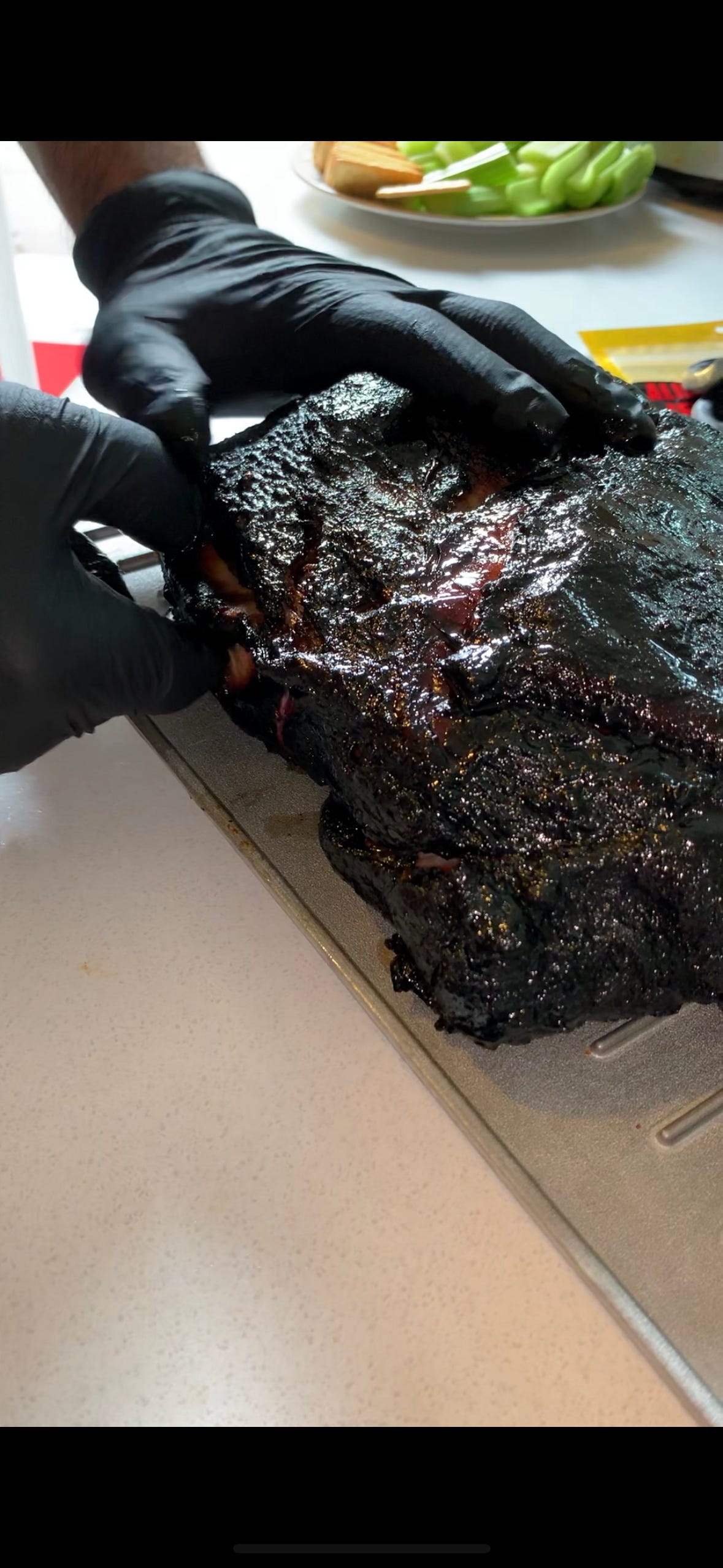
The pork butt cooking process is a crucial step in achieving tender and flavorful barbecue. Pork butt is a cut of meat that comes from the shoulder of the pig and contains a good amount of fat, which helps keep the meat moist and juicy during the cooking process. Slow smoking is the preferred method for cooking pork butt, as it allows the flavors to develop and the fat to melt, resulting in a tender and melt-in-your-mouth texture. It’s important to monitor the temperature and cooking time to ensure the perfect balance of tenderness and flavor.
A What Is Pork Butt And Why It Needs To Be Wrapped During Cooking
Pork butt, also known as pork shoulder, is a cut of meat that comes from the shoulder area of the pig. It is a tough and fatty cut, which makes it perfect for slow smoking. When smoking pork butt, it needs to be wrapped during the cooking process to help retain moisture and enhance the tenderness of the meat. Wrapping the pork butt in either butcher paper, aluminum foil, or peach paper creates a steamy environment that helps break down collagen and fat, resulting in a tender and juicy end product. Wrapping also helps to prevent the meat from drying out, ensuring a flavorful and succulent barbecue experience.
B The Science Behind The Cooking Process And Why Timing Is Crucial
The science behind the cooking process of pork butt is crucial to achieving the desired level of tenderness and flavor. Pork butt is a tough cut of meat that contains collagen and fat. Smoking the pork butt at a low and slow temperature breaks down the collagen, transforming it into gelatin, which adds juiciness and tenderness to the meat. Timing is crucial because it determines how long the collagen breaks down, and when to wrap the pork butt to prevent it from drying out. Wrapping the meat at the right time helps to enhance the flavors and retain moisture for a perfect barbecue experience.
Preparing The Pork Butt For Cooking
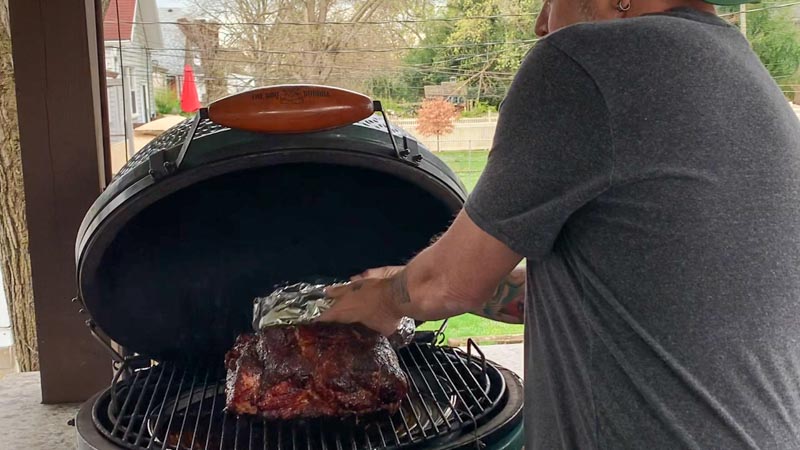
Before cooking the pork butt, it is important to choose the right cut of meat. Look for a pork butt that has a good balance of fat and marbling, as this will contribute to the tenderness and flavor of the final dish. Trim any excess fat or skin from the pork butt before cooking to ensure even cooking and prevent flare-ups. Next, season the pork butt with your preferred rub or marinade. Allow the meat to marinate for at least a few hours or overnight to enhance the flavors. Properly preparing the pork butt sets the foundation for a delicious barbecue experience.
A Choosing The Right Cut Of Pork Butt
When choosing the right cut of pork butt for smoking, it is important to look for a balance of fat and marbling. This will ensure the meat stays tender and juicy throughout the cooking process. Trim any excess fat or skin from the pork butt to promote even cooking. Additionally, selecting a pork butt with a bone-in will add extra flavor to the final dish. Overall, choosing a high-quality cut of pork butt is essential for a successful and delicious barbecue experience.
B Seasoning And Marinating Techniques For Optimal Flavor
Seasoning and marinating play a vital role in enhancing the flavor of pork butt during the smoking process. To achieve optimal flavor, a blend of spices and herbs can be used to create a rub for the meat. Common ingredients include salt, pepper, paprika, garlic powder, and brown sugar. The rub should be generously applied to all sides of the pork butt, allowing it to penetrate the meat and create a flavorful crust during cooking. For an even more intense flavor, marinating the pork butt overnight in a mixture of soy sauce, Worcestershire sauce, and other desired flavors can infuse the meat with delicious taste. Experimenting with different seasonings and marinades can create a unique and mouthwatering barbecue experience.
Slow Smoking The Pork Butt
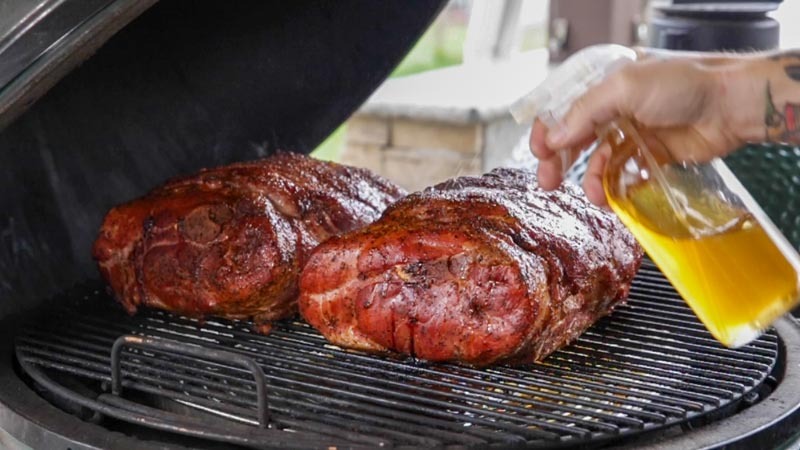
Slow smoking the pork butt is a crucial step in achieving tender and flavorful barbecue. To start, it is important to prepare the smoker and ensure it is clean and properly maintained. The ideal smoking temperature for pork butt is around 225-250°F (107-121°C). Throughout the cooking process, it is essential to monitor and maintain a consistent heat. This can be done by adjusting the ventilation and fuel source as needed. Slow smoking allows the pork butt to absorb the smoky flavors, break down the collagen, and slowly render the fat, resulting in a moist and delicious final product.
A Preparing The Smoker And Achieving The Ideal Smoking Temperature
To prepare the smoker for smoking pork butt, it is important to clean the smoker and ensure it is properly maintained. Remove any ash or residue from previous uses to prevent any unwanted flavors. Next, make sure the smoker is properly sealed to maintain a consistent temperature throughout the cooking process. Adjust the ventilation and fuel source as needed to achieve the ideal smoking temperature of 225-250°F (107-121°C). This temperature range will allow the meat to slowly cook and absorb the smoky flavors, resulting in a delicious and tender pork butt.
B Monitoring And Maintaining The Heat Throughout The Cooking Process
To ensure the pork butt cooks evenly and at the desired temperature, it is crucial to monitor and maintain the heat throughout the cooking process. This can be achieved by regularly checking the temperature of the smoker and making necessary adjustments to the fuel source and ventilation. A consistent temperature of 225-250°F (107-121°C) should be maintained to ensure optimal smoking conditions. Use a reliable thermometer to monitor the internal temperature of the pork butt as well, ensuring it reaches an internal temperature of 195-205°F (90-96°C) for tender and juicy results. Regularly add fuel and adjust vents as needed to maintain a steady and consistent heat.
When To Wrap The Pork Butt
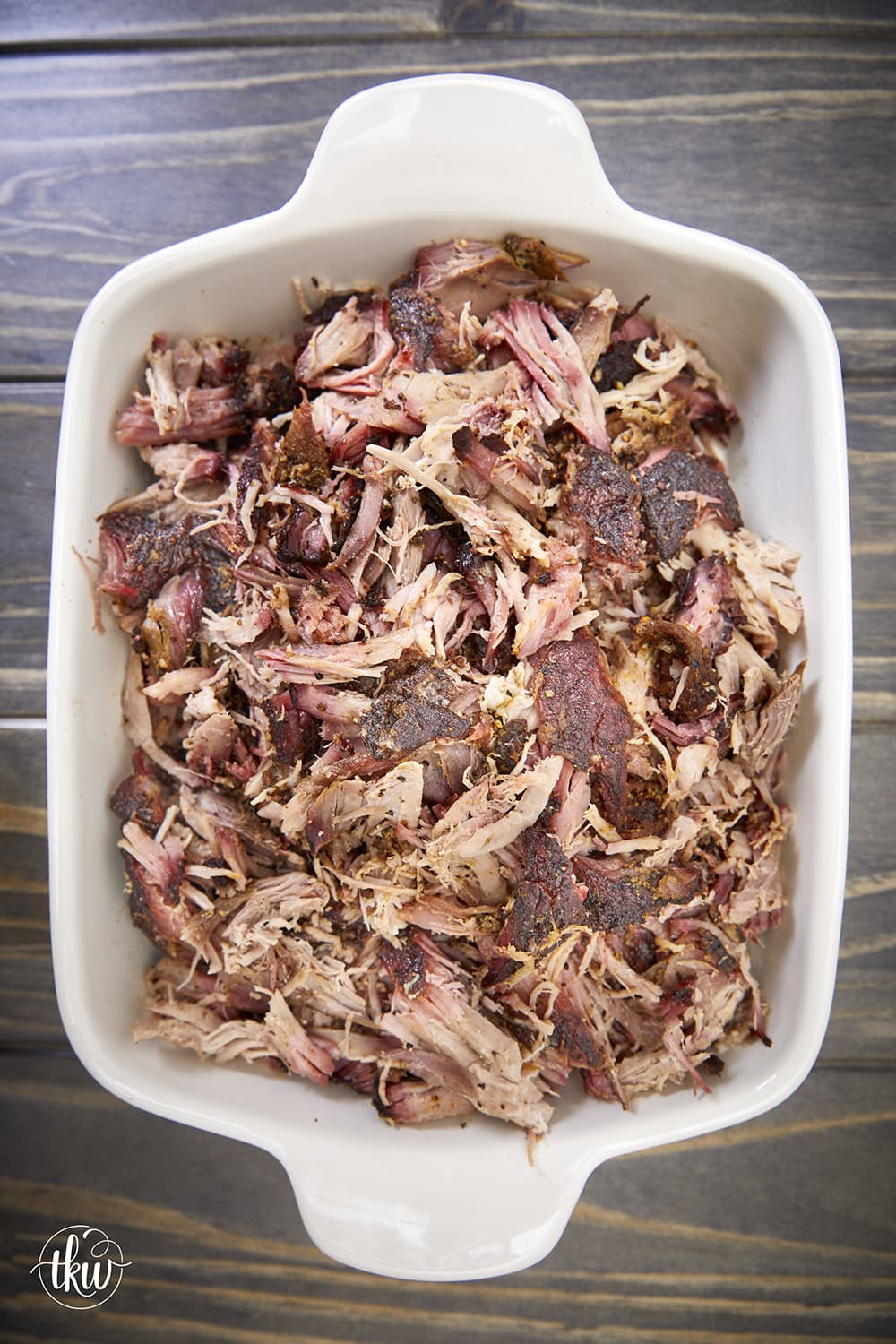
When to Wrap the Pork Butt:
Wrapping the pork butt is an important step in the smoking process to ensure tender and juicy results. The decision to wrap the pork butt typically depends on the cooking time and the desired level of bark formation. After several hours of smoking, a phenomenon known as “the stall” may occur, where the internal temperature of the pork butt plateaus. This is the ideal time to wrap the meat to accelerate the cooking process and retain moisture. Wrapping can be done with butcher paper, aluminum foil, or peach paper, providing the necessary insulation to maintain heat and moisture levels.
A The Importance Of The Stall And When To Expect It
The stall is a critical phase in the smoking process for pork butt. It occurs when the internal temperature of the meat plateaus, sometimes for several hours. This phenomenon is caused by the evaporation of moisture on the meat’s surface, creating a cooling effect. While it may seem frustrating, the stall is essential for achieving tender and juicy results. It allows the collagen and connective tissues in the pork to break down slowly, resulting in a melt-in-your-mouth texture. Expect the stall to happen around 160-170°F (71-77°C) and be prepared to exercise patience during this important stage.
B Deciding When To Wrap The Pork Butt For Tender And Juicy Results
Knowing when to wrap the pork butt is essential for achieving tender and juicy results. The decision to wrap should be based on the desired outcome and the cooking method being used.
If you prefer a crispy and well-developed bark, you may choose to keep the pork butt unwrapped for a longer period of time. This allows the surface to develop a delicious crust. However, if you prioritize tenderness and moisture, wrapping the pork butt can help retain the juices and promote a more succulent end result.
Keep in mind that wrapping too early can soften the bark, while wrapping too late can result in a dry exterior. It is recommended to wrap the pork butt when it reaches the desired level of bark development and internal temperature. Use a meat thermometer to monitor the doneness and make an informed decision on when to wrap for the best outcome.
Wrapping Techniques And Tools
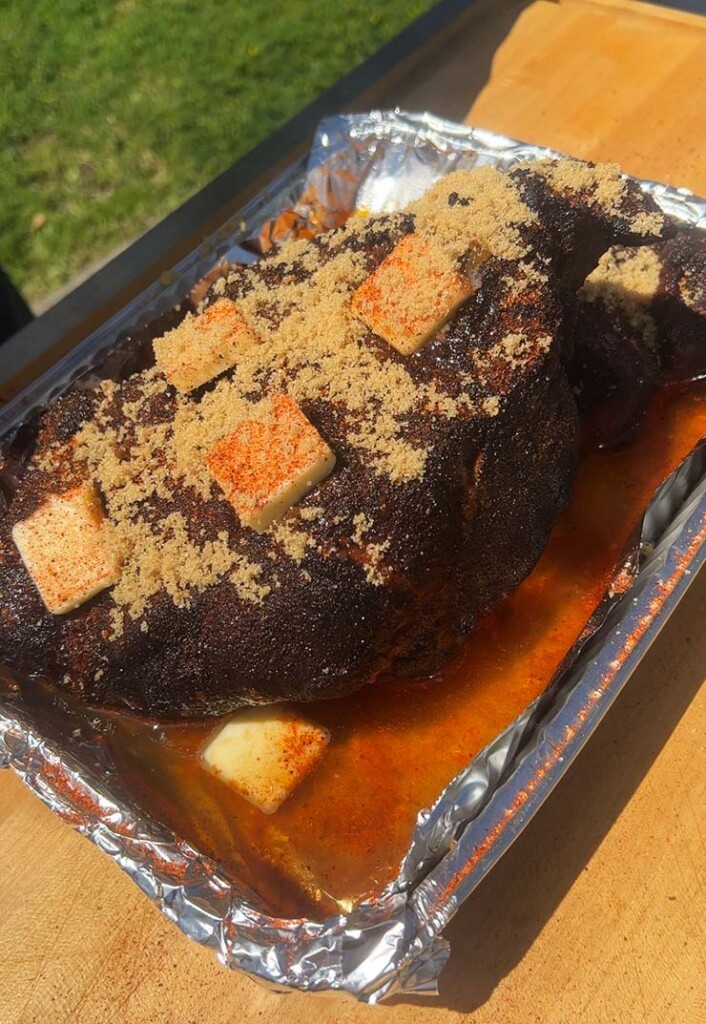
To achieve the perfect pork butt, it’s important to master the art of wrapping. There are different wrapping techniques you can use, including butcher paper, aluminum foil, or peach paper. Butcher paper is great for those who prefer a crispy bark, while aluminum foil helps to retain moisture and create a tender result. Peach paper is a popular choice for its breathable properties. When wrapping, ensure a tight and secure seal to prevent any liquid from escaping. Additionally, make sure to have essential tools like kitchen twine or heat-resistant gloves to handle the hot meat and wrap it effectively.
A Different Methods Of Wrapping, Including Using Butcher Paper, Aluminum Foil, Or Peach Paper
There are different methods of wrapping your pork butt during the cooking process, each with its own benefits. Butcher paper is a popular choice for those who prefer a crispy bark on their meat. It allows air to circulate and helps maintain moisture while still letting some smoke flavor penetrate. Aluminum foil, on the other hand, is great for retaining moisture and creating a tender result. It seals in the juices and helps the pork butt cook faster. Peach paper is also a breathable option that offers a balance between the two, allowing for a flavorful and tender outcome. Choose the wrapping method that suits your preferences and desired result.
B Essential Tools And Tips For Properly Wrapping The Pork Butt
To properly wrap a pork butt, there are a few essential tools and tips to keep in mind. Firstly, make sure you have enough wrapping material, such as butcher paper, aluminum foil, or peach paper. You’ll also need a sturdy pair of tongs or gloves to handle the hot meat. When wrapping, ensure the entire pork butt is covered tightly and securely to retain moisture. Additionally, consider placing the wrapped pork butt in a disposable aluminum pan to catch any drippings and make cleanup easier. Finally, label the wrapped pork butt with the time and temperature for easy reference during the cooking process.
Resting And Serving The Perfect Pork Butt
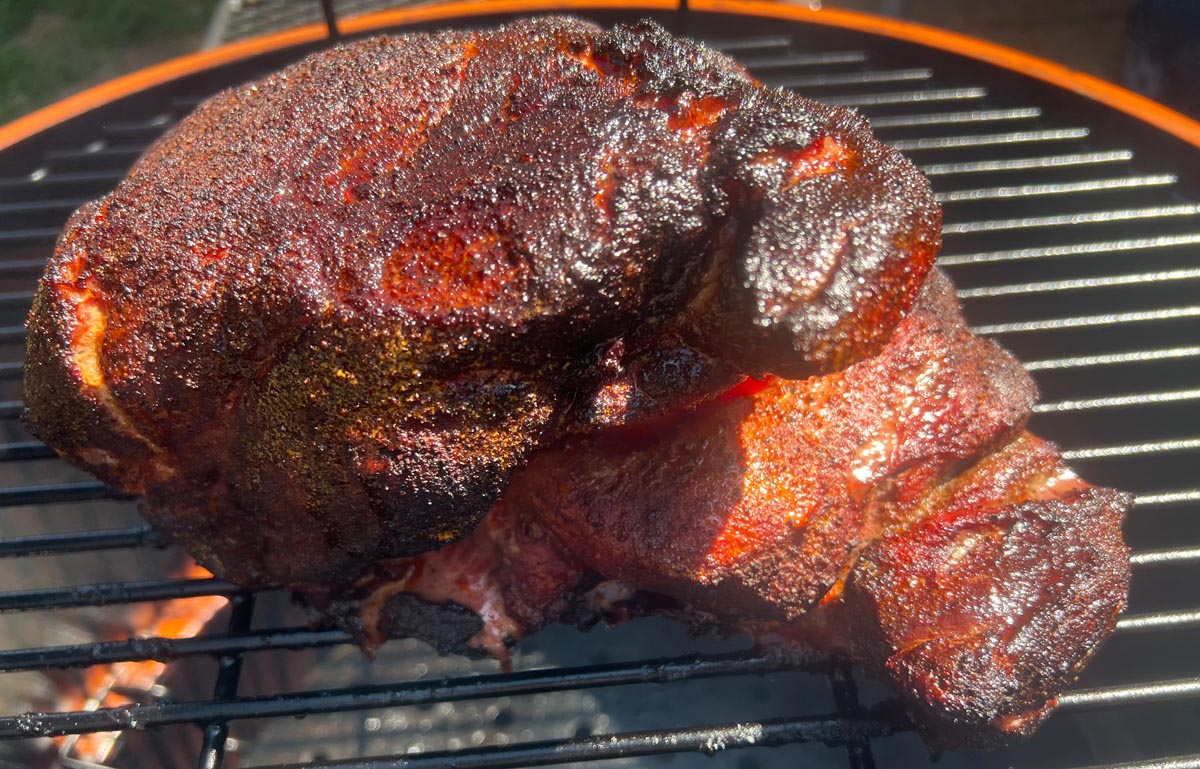
After the pork butt has been cooked to perfection, it’s crucial to let it rest before serving. This allows the juices to redistribute and ensures a tender and flavorful end result. Once the pork butt is removed from the smoker, let it rest uncovered for about 15 minutes. This will help the exterior crisp up slightly. After the initial rest, tightly wrap the pork butt in butcher paper and aluminum foil, and place it in a cooler for at least one to two hours. This extended resting period further enhances the tenderness and allows the flavors to meld together. Finally, it’s time to carve and serve the succulent and flavorful barbecue delight. Serve the pork butt sliced or pulled, accompanied by your favorite barbecue sauce and side dishes for a truly unforgettable meal.
A Allowing The Pork Butt To Rest And Redistribute Its Juices
After the pork butt has been cooked to perfection, it’s crucial to let it rest before serving. This allows the juices to redistribute and ensures a tender and flavorful end result. Once the pork butt is removed from the smoker, let it rest uncovered for about 15 minutes. This will help the exterior crisp up slightly. After the initial rest, tightly wrap the pork butt in butcher paper and aluminum foil, and place it in a cooler for at least one to two hours. This extended resting period further enhances the tenderness and allows the flavors to meld together. Finally, it’s time to carve and serve the succulent and flavorful barbecue delight. Serve the pork butt sliced or pulled, accompanied by your favorite barbecue sauce and side dishes for a truly unforgettable meal.
B Carving And Serving The Succulent And Flavorful Barbecue Delight
Once the pork butt has rested and absorbed all of its juices, it is time to carve and serve the succulent barbecue delight. Begin by removing the wrapping and carefully slice the pork butt against the grain for tender and juicy slices. Alternatively, use two forks to pull the meat apart, creating delicious pulled pork. Serve the carved or pulled pork butt with your favorite barbecue sauce and accompanied by a variety of side dishes. The result will be a flavorful and satisfying barbecue meal that will impress your guests and leave them craving for more.
Frequently Asked Questions about Wrapping Pork Butt
Q: When should I wrap a pork butt during the cooking process?
A: Wrapping a pork butt, also known as a Boston butt, is a popular technique used in barbecue cooking to help retain moisture, enhance tenderness, and speed up the cooking process. The decision to wrap depends on personal preference and the desired outcome.
Q: At what internal temperature should I consider wrapping the pork butt?
A: Wrapping is usually done when the pork butt reaches an internal temperature of around 160-165°F (71-74°C), which typically occurs around the halfway point of the cooking time. This temperature range is also commonly referred to as the “stall,” where the meat’s temperature tends to plateau for a while.
Q: What are the benefits of wrapping a pork butt during cooking?
A: Wrapping a pork butt in foil or butcher paper helps create a more controlled cooking environment. It helps retain moisture, prevents excessive evaporation, and minimizes the risk of a dry outer bark. Wrapping can also soften connective tissues and accelerate the breakdown process, leading to a tender and flavorful end result.
Q: What are the differences between using foil and butcher paper for wrapping?
A: Foil provides a tight seal that traps more moisture and heat, resulting in a slightly more tender meat. It can also promote faster cooking. However, using foil can limit the formation of a crisp bark. Butcher paper, on the other hand, allows the meat to breathe slightly while still retaining moisture. This can help create a desirable crust while maintaining tenderness.
Q: Is it necessary to wrap a pork butt?
A: Wrapping is not essential, and some pitmasters prefer not to wrap their pork butts. The choice to wrap or not ultimately depends on personal preference and the desired texture of the finished product. It’s worth noting that unwrapped pork butts can have a firmer bark, but may take longer to cook and potentially be less moist.
Q: When should I unwrap the pork butt after wrapping?
A: After wrapping a pork butt, you can unwrap it at various stages based on your preference. Some individuals choose to unwrap during the final stage of cooking to reintroduce a crispy bark. Others may unwrap a bit earlier, allowing the meat to retain some moisture but still develop a bark. Experimentation is key in determining the timing that best suits your taste.
Q: How long should I let the pork butt rest after unwrapping?
A: It is essential to rest the pork butt after unwrapping to allow the juices to redistribute, resulting in a moist and flavorful end product. A good rule of thumb is to let the meat rest for about 15-30 minutes before slicing or pulling it apart. This resting period helps ensure the best possible texture and taste.
In summary, wrapping a pork butt during cooking is a technique that can enhance tenderness, moisture, and speed up the cooking process. The decision to wrap depends on personal preference and desired outcomes. Internal temperature, choice of wrapping material, and resting time are all factors to consider when utilizing this method.

Come for The Burgers… Stay for The Beers!